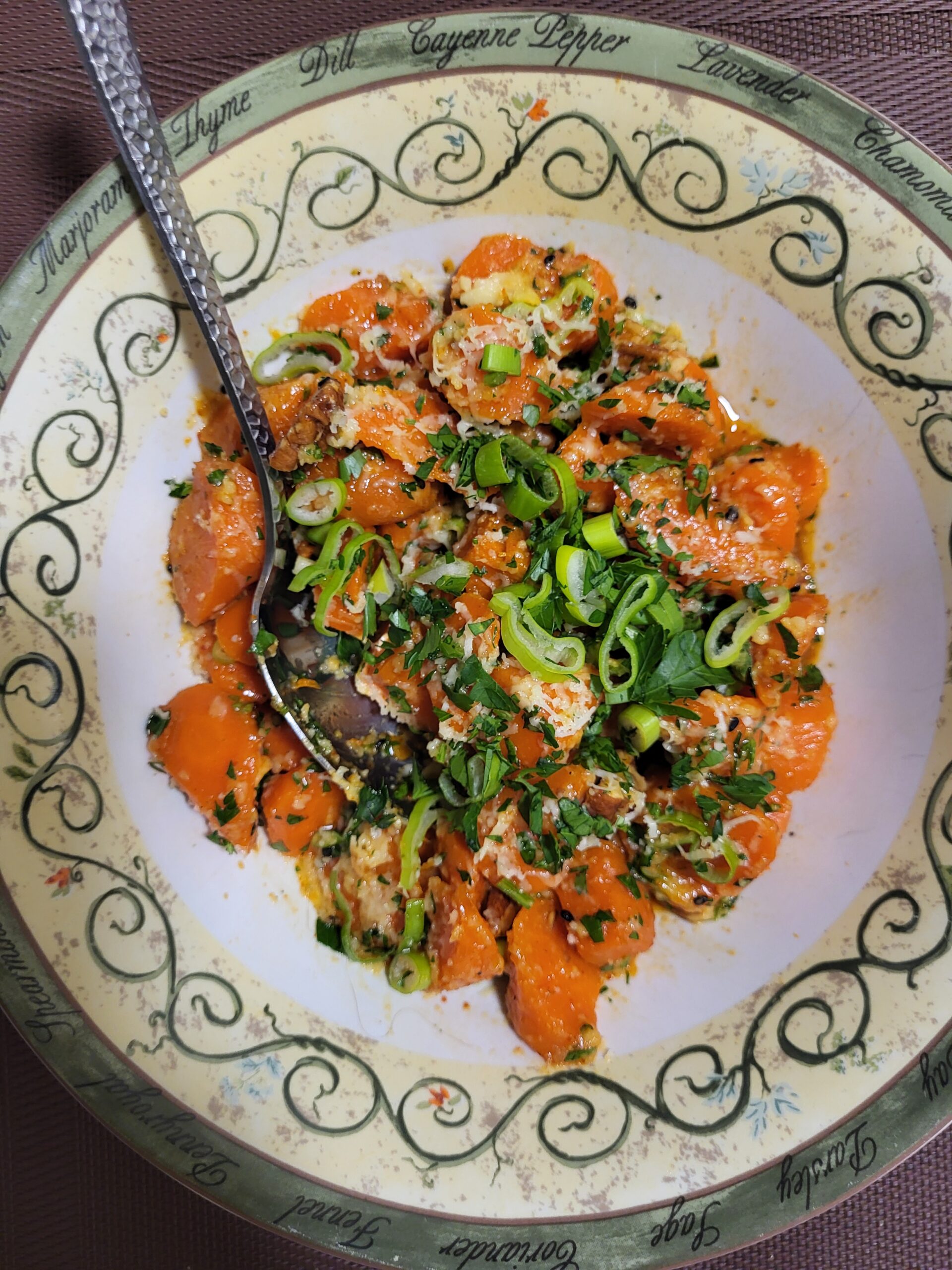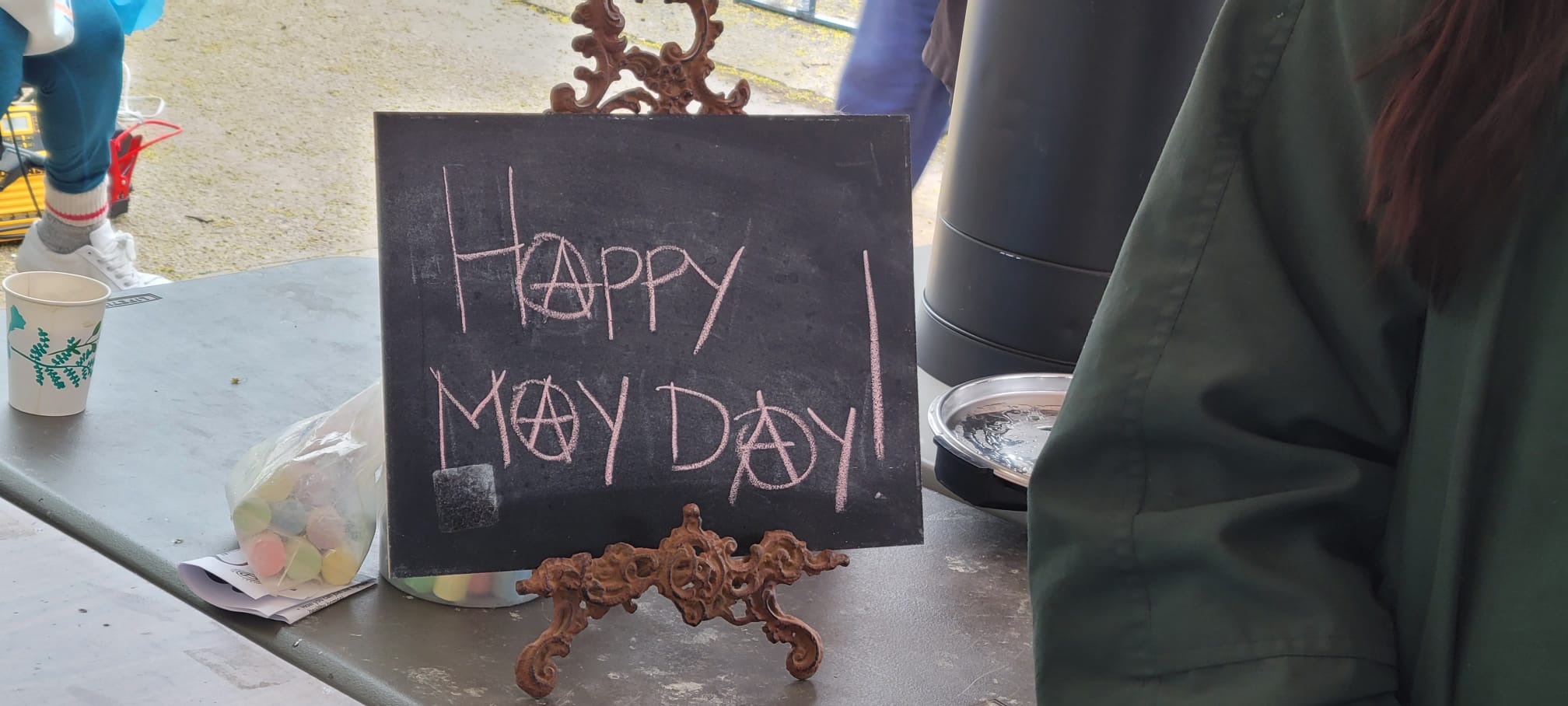Full Circle Cooking
Eve Pisano
Wed May 14, 2025

Welcome to full circle cooking! My goal with this series is to bring you recipes which help save on grocery costs and offer some tips on how to get the most out of every ingredient. I’m based in the Antler River area so I’m going to point out deals at specific stores in the city, but the general advice will be universal.
Meat on a budget.
$20/lb for a butcher’s cut of steak? What the f#&*??! It’s times like these when we’re reminded that meat being a staple is a relatively modern luxury. But it’s doable on a budget by shopping for the right things at the right places, and by expanding our comfort zone in terms of what we’re willing to cook with.
Buying meat part I: United Supermarket
A great tip, and this extends well beyond the world of meat, is to shop at east Asian grocery stores. United Supermarket at Adelaide and Huron St is a treasure trove of deals. If you’re a beef person, you’ll find rib steaks with decent marbling under $10/pound. Tougher, bonier cuts like shanks and oxtail have long been prized as cheap flavour bombs for people willing to put in the time to bring out the best in them, and United is keeping that dream alive.
The seafood section is equally impressive. I can’t point to specific deals here because they are always rotating what fish they’re offering, and that’s part of the fun! One day you’ll find monkfish tail, a chef favourite, and the next day it’s shark fillets. Check in whenever you’re there and see what appeals to you and your wallet.
But today we’re talking about pork. The ultimate meat for the economical cook who isn’t willing to compromise on flavour. Specifically, pork hock.
A pork hock is the pig’s calf, meaning it’s located right below the ham. Therefore, the flavour is similar to ham. There’s a large bone running down the centre of the cut and the ratio of meat is relatively low. This may sound like a downside but how often are you wanting to cook an entire ham at home? And do you like reorganizing your entire fridge to fit the leftovers? I don’t. A hock will easily feed 4 and sometimes that’s all you need.
Furthermore, bone is full of collagen which breaks down into gelatin when cooked and makes for a great stock. Pork hock is an underutilized cut of meat in North American kitchens, but it’s one of my favourites, and it’s the perfect cut of meat for the home cook on a budget. I’ve seen them at United for as low as $2.35/lb, which is insane.
Today I’m going to show you a recipe for a rich and tender glazed pork hock that will leave you with a delicious, aromatic stock.
Coffee glazed Pork Hock with a Warm Carrot Salad
The stock:
1 large pork hock
1 yellow onion, peeled and cut into large chunks
1 stalk celery, cut into large chunks
½ a large carrot, cut into large chunks.
1 small handful whole black peppercorns
1 small handful red sichuan peppercorns
1 Large cinnamon stick
10 Whole cloves
3 Star anise
4 Bay leaves
1 knob ginger
4 medium garlic cloves, left in the skin and lightly crushed using the side of a knife blade
Handful of parsley stems, leaves removed and set aside.
Zest of half an orange
The glaze:
1 tablespoon soy sauce
1 ⅓ tablespoons brown sugar
1 tablespoon banana ketchup
2 tsp brewed coffee or cold brew
1 tablespoon cooking oil
Notes:
- You can use two hocks if you have more mouths to feed and your pot is big enough. Just double the glaze recipe.
- These are the spices and aromatics I like. You can do whatever you want; use what you have.
- Because of the extended cooking time, it’s best to leave the veggies in large chunks. Otherwise they’ll turn to mush which might coat the meat and WILL make your stock cloudy.
- I’d recommend peeling the orange rather than grating so that it’s easier to strain off later on. Make sure to only peel the orange layer of skin, avoiding the bitter white pith underneath.
- Banana ketchup is slightly sweeter and less acidic than tomato ketchup, but either one would be fine. You can find it in east Asian and Filipino groceries.
- I like to infuse a large batch of neutral oil by boiling it and pouring it over finely diced garlic, ginger, scallion whites, and bonito flakes. This is optional although it does a lot for this recipe. The oil will keep for a looooooong time in the fridge and can be used to enhance basically anything you want, from meats to noodles and soups to fried eggs.
- For the coffee, I’d recommend a light roast from Colombia or Indonesia. The chocolatey, nutty flavours of Colombian coffee as well as the berry-like acidity will complement the dish nicely, while Indonesian coffee often reminds me of sweet potatoes and baking spices. I could do a whole deep dive on cooking with coffee and when to use certain types.
Directions:
Add the meat and aromatics to a pot and fill with plenty of cold water until everything is submerged. Bring to a boil, then reduce to a simmer and cook for about 3 hours, or until the thickest part reaches at least 145°F. Check periodically and skim off any foam which forms on the surface of the liquid.
Remove the meat and refrigerate until completely cooled. Strain the stock. You can stop here or continue to reduce the stock to make storage more manageable. It will gelatinize as it cools and you can keep it in your freezer for months. Cut off a chunk and use as a base for soups and sauces or to braise meat and vegetables.
Mix all the glaze ingredients. Pat the pork hock dry with a cloth and brush the glaze on liberally. Bake at 400°F for 20 minutes, checking regularly to make sure the sugars aren’t burning, and applying more glaze if it looks dry. It’s done when the glaze is thickened and deeply caramelized.
Serve on a platter and carve around the bone. Don’t worry too much about getting perfect slices.
The carrot salad:
4 large carrots, in 1cm thin rounds
2 big knobs of butter
2 tbsp honey
1 scallion, cut into thin diagonal rounds
1 ½ tablespoons flat leaf parsley, finely chopped
A healthy sprinkle of a freshly grated strong cheese like smoked white cheddar
To taste:
Salt
Pepper
Smoked chili flakes (non-smoked is fine, so is chili powder)
Orange or tangerine zest (this time zesting with a microplane or the finest side of a box grater)
Notes:
- I don’t peel my carrots most of the time. I believe carrot skins have been an unfair victim of cancel culture. They’re full of nutrients and I’ve never found them to impact my carrot consumption experience as long as they’re properly washed. If you absolutely must peel them, I urge you to save the peels and try baking or shallow-frying them, then tossing them with salt and your favourite seasonings. Free carrot chips!
- If your carrots came with the greens still attached, those are edible! They have a zingy, peppery taste that goes well in salads. Try making tabbouleh with carrot greens and purslane mixed into the parsley!
Heat half of the butter in a wide sautée pan over medium heat until the bubbling subsides. Add your carrots and season with salt, pepper, chili flakes, and orange zest. Toss or stir to combine.
Wait for the spices to become fragrant, being careful not to burn the chili flakes or zest. This should take 30-60 seconds. Then stir in the honey.
Reduce the heat to medium-low. Cover and cook, checking frequently until the carrots can be easily pierced with a fork with little resistance.
Remove the lid and allow the glaze to reduce to your desired thickness.
Add the remaining butter while stirring vigorously to emulsify with the honey and glaze the carrots.
Remove from the heat and bowl those babies up. Top with the scallions, parsley, and cheese and serve family style.






